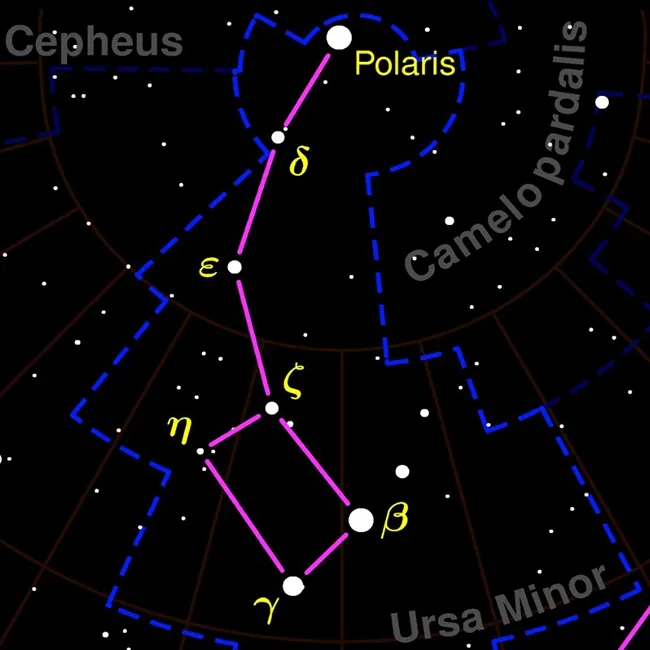
Ursa Minor, also known as the Little Bear, is a prominent constellation in the northern sky. It is perhaps most famous for containing Polaris, the current North Star. The constellation is often visualized as a smaller version of Ursa Major, the Big Bear, with its tail extending into a group of stars that form a small dipper-like shape. This smaller dipper is often called the Little Dipper, which is entirely contained within Ursa Minor.
Key Features
The primary feature of Ursa Minor is the Little Dipper asterism, which consists of seven stars. The handle of the Little Dipper is formed by the three stars that make up the tail of the Little Bear, with Polaris located at the end. The four stars forming the bowl of the dipper represent the body of the bear.
Mythology
Ursa Minor's mythology is intertwined with that of Ursa Major. In Greek mythology, both constellations represent bears. According to one version of the myth, Zeus placed the nymph Callisto and her son, Arcas, in the sky to protect them from Hera's wrath, transforming them into Ursa Major and Ursa Minor. In another version, Ursa Minor represents the nymph Cynosura, who was placed in the sky by Zeus as a reward for her care.
Notable Stars
- Polaris (Alpha Ursae Minoris): The brightest star in Ursa Minor and the current North Star, located nearly directly above the Earth's northern pole, making it a crucial star for navigation.
- Kochab (Beta Ursae Minoris): The second brightest star in the constellation, often referred to as the "Guardian of the Pole" alongside Pherkad.
- Pherkad (Gamma Ursae Minoris): Another bright star in Ursa Minor, also contributing to the "Guardians of the Pole" designation along with Kochab.
Visibility
Ursa Minor is a circumpolar constellation for most observers in the Northern Hemisphere, meaning it never sets below the horizon and can be seen year-round. The constellation is best visible in clear, dark skies away from city lights, where the faint stars of the Little Dipper are easier to spot.
Tips for Observing
- Locating Polaris: Start by finding the Big Dipper (Ursa Major). Draw an imaginary line through the two outer stars of the Big Dipper’s bowl, Dubhe and Merak, and extend it upward. This line will point directly to Polaris, the end star of the Little Dipper’s handle.
- Dark Skies: The faint stars of the Little Dipper can be challenging to see in light-polluted areas, so finding a dark location is essential for observing the entire constellation.
- Seasonal Viewing: While Ursa Minor is visible throughout the year, winter months often provide the clearest skies, making it easier to spot the fainter stars.
